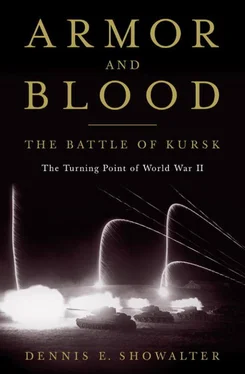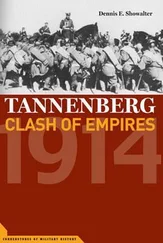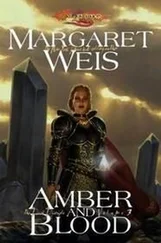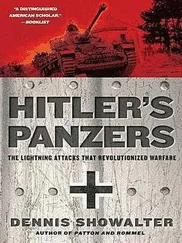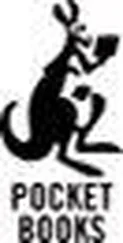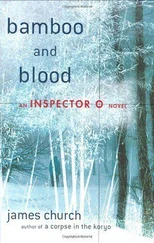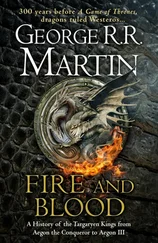Operation Blue tore the southern front wide open beginning on June 28. Its plan was audacious to the point of recklessness. An armored spearhead, the Fourth Panzer Army, was to thrust toward the Don River and the rail hub and industrial center of Voronezh, then turn south to trap and finish off the Reds driven east by the First Panzer Army and its accompanying infantry. Meanwhile, the Sixth Army would advance to the Volga and Stalingrad, while the First Panzer Army struck down the Volga to Baku and the Caucasus.
Stalin and his high command, Stavka, responded by launching a series of offensives against German Army Groups North and Center and committing more of their steadily increasing reserve forces to successive offensives around Voronezh. These were not mere counterattacks, but parts of a systematic effort to regain the strategic initiative secured in December 1941 and now apparently slipping away. That effort was frustrated by consistently poor execution, operationally and administratively, at subordinate levels. Compensating by micromanaging only compounded the problem. The Germans consistently got within Red Army decision/implementation loops and just as consistently surged forward.
The problem was that they were surging to nowhere in particular. Instead, the offensive was pursuing two objectives simultaneously rather than sequentially, as in Blue’s original conception. This was no simple manifestation of Hitler’s unfocused, dilettantish interference in command decisions. Soviet pressure on the attack’s left flank was convincing the German high command as well as the Führer that for the Caucasus and its oil fields to fall, Stalingrad must be not merely blockaded and screened, but captured.
The result across the offensive’s front was an increasing division and diversion of German forces, in particular the panzer and motorized divisions, which were barely sufficient for Operation Blue had it gone as expected. In the Caucasus sector, Soviet resistance combined with dust, broken terrain, fuel shortages, and unreplaced losses in men and tanks to halt the Germans well away from the oil fields of Grozny and Baku by the end of September. A final desperate German lunge only delayed the inevitable retreat. At the same time, Stalingrad developed into a magnet and a killing ground for German forces sacrificed to the high command’s conviction that maintaining the initiative was better served by continuing into the city than enveloping it and blocking the Volga with air and artillery.
On August 26, Stalin bit a bullet of his own and appointed Zhukov his deputy supreme commander. Zhukov typified a new generation of Red Army generals: as fearless as they were pitiless, ready to do anything to crush the Germans, and not inhibited by threats from either front or rear. He shared his superior’s conviction that Stalingrad must be held—but in a strategic context. The summer of ripostes was over. Since September, Stavka, urged on by Zhukov, had been developing plans for a decisive winter campaign involving two major operations. Operation Mars would be launched in mid-October against a seemingly vulnerable sector on the front of German Army Group Center: a salient around the city of Rzhev. It would be followed in two or three weeks by Operation Jupiter, an attack in the Bryansk sector, to the south, intended to link up with Mars and shatter Army Group Center. Operation Uranus would begin in mid-November and commit large mobile forces north and south of Stalingrad, encircling and destroying enemy forces in the resulting pocket. Uranus was to be followed by Operation Saturn, which would finish off whatever remained of the Germans in Stalingrad and leave those in the Caucasus isolated, ripe for the picking.
Described for years in Soviet literature as no more than a diversion, Mars was in fact a complement to Uranus, a double penetration intended to put the Red Army on the high road to Berlin. It was, to say the least, an ambitious strategy for an army still reeling from the seismic shocks of Barbarossa and Blue. Its prospects depended entirely on the ability of Stalingrad’s defenders to hold. Hold the Red Army did, in an epic defense that reduced the city to a wilderness of rubble, smoke, and ash. Two graffiti on the remnants of a wall told the story. One read “Here Rodimtsev’s Guardsmen stood to the death.” Below it was a coda: “They stood, and defeated death.”
On November 19, the tide turned. Stavka had held its hand for a month, waiting for the rains to end and the ground to freeze. Two tank-headed sledgehammers struck the Romanian armies holding the flanks of the Stalingrad salient. A million men, a thousand modern tanks, fourteen hundred aircraft, fourteen thousand guns—all of it went undetected by a German intelligence blinded by Soviet deception measures and by its own belief that the Soviets were as locked into Stalingrad as the Germans were. On November 23, the Soviet spearheads met fifty miles west of Stalingrad.
The resulting catastrophe might well have metastasized except for an overlooked German victory to the north. Operation Mars, the other half of Operation Uranus, was delayed a month by heavy rains and began only on November 24. German intelligence for once accurately predicted something like the massive Soviet forces involved.
Had the Soviets been able to get out of their own way, the German front in the East might have broken from the attack’s sheer mass: thirty-seven rifle divisions, forty-five tank and mechanized brigades, and dozens of independent artillery regiments. Instead, traffic and supply problems slowed the Red Army columns just long enough for the Germans to mount a series of counterattacks that cut off Soviet tank spearheads and stabilized the front.
With his reputation, perhaps his position, and possibly his neck at stake, Zhukov brought together the offensive’s senior commanders on November 28 for counseling and admonition. The attack resumed with predictably renewed vigor the next day, featuring everything from tank attacks to cavalry charges. The weather grew more bitter in the first days of December. This year, however, the Germans were well supplied with winter clothing and had learned how to use trees and drifts to keep from freezing. The Landser , the foot soldiers and tankers, held—just barely, but it was enough. The Red Army stood down in mid-December. Soviet casualties exceeded two hundred thousand men, half of them dead. Over eighteen hundred of the two thousand tanks committed had been lost. Grimly, the Germans reported fewer than five thousand prisoners: quarter was neither asked nor given in most times and places in the Rzhev salient.
The historian David Glantz correctly describes the original strategic plan for Mars as too ambitious and Zhukov as too stubbornly optimistic to modify it. Operationally and tactically, however, Rzhev was a watershed. This was the last time in a major sector that the Red Army made the adolescent mistakes characteristic of its post-Barbarossa reconstruction: poor tank-infantry-artillery cooperation, inflexibility at all command levels, a tendency to reinforce failure at the expense of exploiting success. Rzhev, seen from a Soviet perspective, resembles the French offensives of 1915 in the Champagne and the British experience on the Somme a year later: a high learning curve imposed by an instructor charging even higher tuition.
On the other hand, Operation Uranus, the attack at Stalingrad, threatened to eviscerate the entire German position in Russia. The suddenly threatened forces in the Caucasus were too involved in their own withdrawal to assist the now surrounded Germans in Stalingrad. No significant reserves were available elsewhere in Russia or anywhere else under Nazi rule. The garrison’s faint hopes ended definitively on December 16, when the Soviets responded to their initial success in that sector by launching a modified version of Operation Saturn. “Little Saturn” belied its name: it involved thirty-six rifle divisions, over a thousand tanks, and five thousand guns and mortars. As Soviet tanks and cavalry ran wild in the virtually undefended German rear areas, Field Marshal Erich von Manstein made a decision. One of Germany’s outstanding experts on armored war, Manstein had been given command in the Stalingrad sector because earlier in the Russo-German War he had earned a reputation as a troubleshooter from Leningrad to Sebastopol. By December 19, it was clear to him that Stalingrad could not be relieved. The best hope of salvaging the situation involved sacrificing territory—most of the territory, in fact, gained during the entire summer campaign.
Читать дальше
